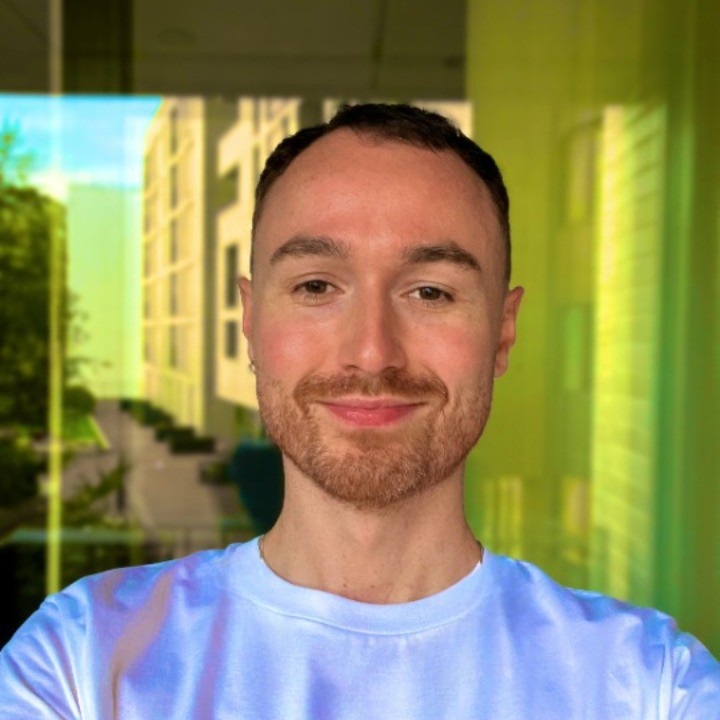Positive Binary Numbers (OCR A Level Computer Science)
Revision Note

Author
Callum DaviesExpertise
Computer Science
Binary
What is Binary?
binary refers to a system of representing information using only two digits: 0 and 1.
Bits
A bit is the smallest unit of digital information, representing either an "off" (0) or an "on" (1) state.

The status of a computer bit being on or off.
Bytes
Bits are grouped into larger structures to form bytes (8 bits), words, and long words
These groupings allow us to represent more complex information, like numbers, text, and instructions

Groups bits to store more complex information
What do the 0s and 1s represent?
In binary, each level is based on powers of 2
In the 8-bit binary number below, each of the 8 columns represents values of 2n , e.g.
20 = 1
21 = 2
22 = 4
23 = 8
24 = 16
25 = 32
26 = 64
27 = 128

Binary powers of two
Encoding and representation
Various encoding schemes, like ASCII for text or JPEG for images, map these binary values to human-readable forms
For example, the binary value 01001000 represents the letter 'H' in ASCII
In the example below, an image is shaded black or white depending on the binary value for each pixel
Each row in the image requires 1 byte of storage
Pixel-shading in a bitmap image
Abstraction layers
Computers handle large volumes of basic numeric data
To create meaningful representations of data, layers of abstraction exist so that basic data can be interpreted upwards into other forms, e.g. images, sound, video
The same principle applies to programming languages that compile down into binary code
At the bottom, you have binary, and each layer above it allows for more meaningful information to be represented

Abstractions of binary
Converting Between Binary & Denary
Within computer science, two common number systems are:
Denary numbers – This is also known as base-10. These are used by humans and consist of 10 digits ranging from 0 to 9
Binary numbers - Computer systems store data using 1s and 0s. This is known as binary or base-2. Computer systems store data in binary format because computers are made up of circuits and switches that are either on (1) or off (0)
Binary numbers can be converted into denary and vice-versa
For example the 8-bit binary number 01101001 can be converted into denary using the following method:

Binary to decimal conversion
Therefore the 8-bit binary number 01101001 is 105 as a denary value.
Converting Between Denary & Binary
To convert the denary number 101 to binary, we firstly write out binary number system
128 | 64 | 32 | 16 | 8 | 4 | 2 | 1 |
|---|---|---|---|---|---|---|---|
|
|
|
|
|
|
|
|
Then we start at the left and look for the highest number that is less than or equal to 101 and if so, place a 1 in that column. Otherwise, place a 0 in the column
128 is bigger than 101 and therefore we place a 0 in that column
64 is smaller than 101 so we place a 1 in that column. 101 - 64 = 37. This now means we have 37 left to find
32 is smaller than 37 so we place a 1 in that column. 37 - 32 = 5. This now means we have 5 left to find
16 is bigger than 5 and therefore we place a 0 in that column
8 is bigger than 5 and therefore we place a 0 in that column
4 is smaller than 5 so we place a 1 in that column. 5 - 1 = 1. This now means we have 1 left to find
2 is bigger than 1 and therefore we place a 0 in that column
1 is equal to the number we have left so we place a 1 in that column
64 + 32 + 4 + 1 = 101. Therefore the denary number 101 in binary is 01100101
128 | 64 | 32 | 16 | 8 | 4 | 2 | 1 |
|---|---|---|---|---|---|---|---|
0 | 1 | 1 | 0 | 0 | 1 | 0 | 1 |

You've read 0 of your 0 free revision notes
Get unlimited access
to absolutely everything:
- Downloadable PDFs
- Unlimited Revision Notes
- Topic Questions
- Past Papers
- Model Answers
- Videos (Maths and Science)
Did this page help you?